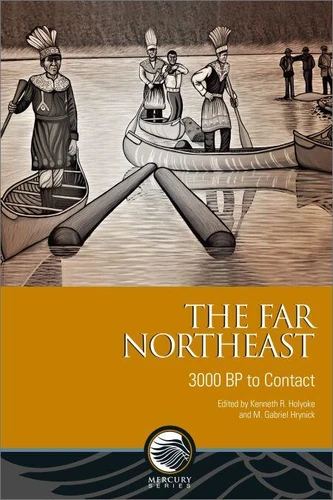The Far Northeast. 3000 BP to Contact
Par : ,Formats :
Disponible dans votre compte client Decitre ou Furet du Nord dès validation de votre commande. Le format PDF est :
- Compatible avec une lecture sur My Vivlio (smartphone, tablette, ordinateur)
- Compatible avec une lecture sur liseuses Vivlio
- Pour les liseuses autres que Vivlio, vous devez utiliser le logiciel Adobe Digital Edition. Non compatible avec la lecture sur les liseuses Kindle, Remarkable et Sony
 , qui est-ce ?
, qui est-ce ?Notre partenaire de plateforme de lecture numérique où vous retrouverez l'ensemble de vos ebooks gratuitement
Pour en savoir plus sur nos ebooks, consultez notre aide en ligne ici
- Nombre de pages646
- FormatPDF
- ISBN978-0-7766-2966-7
- EAN9780776629667
- Date de parution22/03/2022
- Protection num.pas de protection
- Taille313 Mo
- Infos supplémentairespdf
- ÉditeurMercury-Mercure
Résumé
The Far Northeast: 3000 BP to Contact is the first volume to synthesize archaeological research from across Atlantic Canada and northern New England for the period spanning from 3000 years ago to European contact. Recently, notions of the "Woodland period" in the broader Northeast have drawn scrutiny from experts due to increasing awareness that its hallmarks-such as horticulture, village formation, mortuary ceremonialism, and the advent of various technologies-appear to be less synchronous than once thought.
By paying particular attention to the Far Northeast and its unique (yet sometimes marginal) position in Woodland discourse, this work offers a much-needed in-depth look at one of the best-documented cases of hunter-gatherer persistence and adaptation at the eve of European contact. Penned by academic, government, and cultural-resource-management archaeologists, the seventeen chapters in The Far Northeast: 3000 BP to Contact draw on decades of research in considering this period, both in terms of variability within the region, and integration with broader cultural patterns in the Northeast and beyond.
By paying particular attention to the Far Northeast and its unique (yet sometimes marginal) position in Woodland discourse, this work offers a much-needed in-depth look at one of the best-documented cases of hunter-gatherer persistence and adaptation at the eve of European contact. Penned by academic, government, and cultural-resource-management archaeologists, the seventeen chapters in The Far Northeast: 3000 BP to Contact draw on decades of research in considering this period, both in terms of variability within the region, and integration with broader cultural patterns in the Northeast and beyond.
The Far Northeast: 3000 BP to Contact is the first volume to synthesize archaeological research from across Atlantic Canada and northern New England for the period spanning from 3000 years ago to European contact. Recently, notions of the "Woodland period" in the broader Northeast have drawn scrutiny from experts due to increasing awareness that its hallmarks-such as horticulture, village formation, mortuary ceremonialism, and the advent of various technologies-appear to be less synchronous than once thought.
By paying particular attention to the Far Northeast and its unique (yet sometimes marginal) position in Woodland discourse, this work offers a much-needed in-depth look at one of the best-documented cases of hunter-gatherer persistence and adaptation at the eve of European contact. Penned by academic, government, and cultural-resource-management archaeologists, the seventeen chapters in The Far Northeast: 3000 BP to Contact draw on decades of research in considering this period, both in terms of variability within the region, and integration with broader cultural patterns in the Northeast and beyond.
By paying particular attention to the Far Northeast and its unique (yet sometimes marginal) position in Woodland discourse, this work offers a much-needed in-depth look at one of the best-documented cases of hunter-gatherer persistence and adaptation at the eve of European contact. Penned by academic, government, and cultural-resource-management archaeologists, the seventeen chapters in The Far Northeast: 3000 BP to Contact draw on decades of research in considering this period, both in terms of variability within the region, and integration with broader cultural patterns in the Northeast and beyond.



